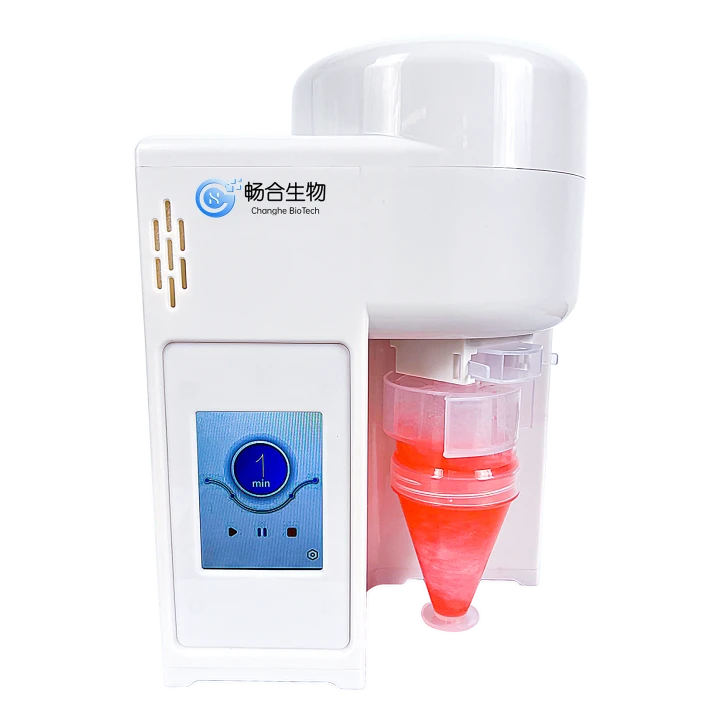
Mini PCR
يانۋار . 21, 2025 05:22
Back to list
Mini PCR
Digital PCR (dPCR) represents a groundbreaking advancement in the precise quantification of nucleic acids, setting new benchmarks for precision, sensitivity, and reliability in molecular biology. As an expert in next-generation analytical technologies, the profound impact of dPCR on research and diagnostics is evident through various applications and innovations that continue to unfold. This article explores the implications, applications, and emerging trends of digital PCR technology.
Environmental monitoring also benefits significantly from digital PCR’s capabilities. It provides insights into biodiversity by quantifying environmental DNA (eDNA) collected from various ecosystems, facilitating biodiversity assessments and aiding conservation efforts. Furthermore, the technology allows for precise detection of micropollutants and pathogens in water bodies, playing a critical role in safeguarding public health and ensuring environmental safety. Understanding the innovative potential of dPCR is incomplete without acknowledging its interoperability with emerging datasets and its role in advancing precision medicine. The integration of digital PCR data with genomic sequencing and bioinformatics holds the promise of unraveling complex genetic diseases and offering tailored medical solutions. dPCR continues to push the boundaries of what's possible by refining genomic workflows and providing detailed molecular insights. Despite these advancements, the adoption of digital PCR faces several hurdles, including cost implications and the requirement for specialized equipment and expertise. Addressing these challenges is vital for democratizing access to this transformative technology. The industry must focus on developing cost-effective alternatives that do not compromise on accuracy and reliability. Furthermore, comprehensive training programs are necessary to equip researchers and clinicians with the skills needed to optimize the use of dPCR technologies effectively. In conclusion, digital PCR is fostering a new era of precision and innovation in diverse fields such as medical diagnostics, agricultural biotechnology, and environmental science. Its unparalleled sensitivity and accuracy represent the future of quantitative biology. Established authorities and nascent companies alike must collaborate to broaden the reach and applicability of digital PCR, ensuring its benefits are maximized across multiple sectors while maintaining rigorous standards of trustworthiness and scientific integrity. As research continues to evolve, the full potential of digital PCR is only beginning to be realized, promising to redefine what is achievable in diagnostic science and technology.


Environmental monitoring also benefits significantly from digital PCR’s capabilities. It provides insights into biodiversity by quantifying environmental DNA (eDNA) collected from various ecosystems, facilitating biodiversity assessments and aiding conservation efforts. Furthermore, the technology allows for precise detection of micropollutants and pathogens in water bodies, playing a critical role in safeguarding public health and ensuring environmental safety. Understanding the innovative potential of dPCR is incomplete without acknowledging its interoperability with emerging datasets and its role in advancing precision medicine. The integration of digital PCR data with genomic sequencing and bioinformatics holds the promise of unraveling complex genetic diseases and offering tailored medical solutions. dPCR continues to push the boundaries of what's possible by refining genomic workflows and providing detailed molecular insights. Despite these advancements, the adoption of digital PCR faces several hurdles, including cost implications and the requirement for specialized equipment and expertise. Addressing these challenges is vital for democratizing access to this transformative technology. The industry must focus on developing cost-effective alternatives that do not compromise on accuracy and reliability. Furthermore, comprehensive training programs are necessary to equip researchers and clinicians with the skills needed to optimize the use of dPCR technologies effectively. In conclusion, digital PCR is fostering a new era of precision and innovation in diverse fields such as medical diagnostics, agricultural biotechnology, and environmental science. Its unparalleled sensitivity and accuracy represent the future of quantitative biology. Established authorities and nascent companies alike must collaborate to broaden the reach and applicability of digital PCR, ensuring its benefits are maximized across multiple sectors while maintaining rigorous standards of trustworthiness and scientific integrity. As research continues to evolve, the full potential of digital PCR is only beginning to be realized, promising to redefine what is achievable in diagnostic science and technology.
Previous:
Next:
Latest news
-
Real-Time PCR System for Rapid Tuberculosis Detection – Accurate & Reliable ResultsNewsJul.05,2025
-
Comprehensive Feline Respiratory PCR Panel – Accurate Upper Respiratory DiagnosticsNewsJul.05,2025
-
Fluorescence PCR Detection System High Sensitivity & AccuracyNewsJun.24,2025
-
Potassium Chloride in Polymerase Chain Reaction Enhance PCR Accuracy & EfficiencyNewsJun.24,2025
-
Matrice de Grippe PCR – Accurate PCR for Influenza Diagnosis and DetectionNewsJun.10,2025
-
Kreislauf PCR System for Accurate Biological Sampling Advanced PCR & RT PCR SolutionsNewsJun.10,2025




